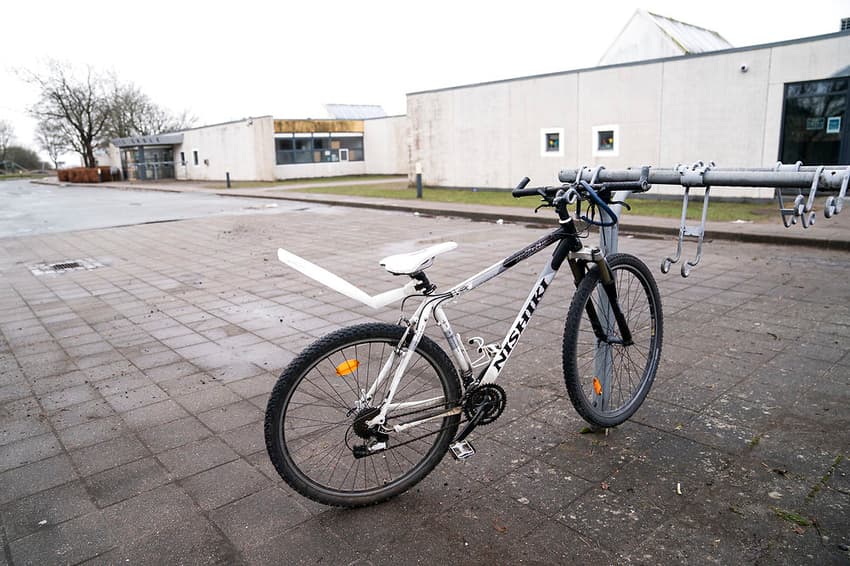UPDATED: Danish town asks adults and children to take Covid-19 test as schools close

The town of Kolding in southern Jutland has asked for all residents over the age of 12 years to be tested for coronavirus after an outbreak in cases.
All schools and kindergartens in the central Kolding area are to close until February 28th as a result of the outbreak, the Ministry of Health announced on Friday afternoon.
Schools up to fourth grade were reopened nationally earlier this month, but Kolding will now face a local closure after 234 confirmed cases in the last week gave it the highest infection rate in Denmark, at 252 cases per 100,000 residents over the last 7 days.
The Kolding municipality has seen cases spread at schools and childcare facilities and earlier requested all adults and children older than two years to take a test, broadcaster TV2 reported earlier on Friday. The request was later changed to the age of 12 years and over following the announcement from Copenhagen, but capacity for younger children to be tested will remain available.
“We have seen infections spread to a number of childcare institutions,” town councillor Michael Petterson told TV2.
“You can choose whether children are tested via the throat or nose [PCR or rapid testing, ed.], and it’s a voluntary scheme,” he said.
He recognised it was a “challenge” for parents to take their children to be tested.
Five mobile test centres will be available in the town on Saturday and Sunday, Kolding Municipality said via social media.
Rapid tests will also be offered at additional locations next week, it said.
Two of the municipality’s 24 schools had already been closed due to the outbreak, as have 8 kindergartens.
The cases at the schools and kindergartens have been linked to the more infectious B117 variant.
Health minister Magnus Heunicke called the outbreak in Kolding "serious".
"Since infections are concentrated around a number of schools and kindergartens, it is necessary to send the youngest children home again and close kindergartens in the town" he said.
Childcare will remain available for parents whose jobs demand it, and vulnerable children will be exempted from the closures.
The only other part of Denmark with a comparable infection rate to Kolding is currently Ishøj near Copenhagen, which has 205 cases per 100,000 residents over the last week.
The third-worst hit municipality, Brøndby, has 102 cases per 100,000 residents, according to latest data.
READ ALSO: Denmark reports first community transmission of B1351 variant
Comments
See Also
All schools and kindergartens in the central Kolding area are to close until February 28th as a result of the outbreak, the Ministry of Health announced on Friday afternoon.
Schools up to fourth grade were reopened nationally earlier this month, but Kolding will now face a local closure after 234 confirmed cases in the last week gave it the highest infection rate in Denmark, at 252 cases per 100,000 residents over the last 7 days.
The Kolding municipality has seen cases spread at schools and childcare facilities and earlier requested all adults and children older than two years to take a test, broadcaster TV2 reported earlier on Friday. The request was later changed to the age of 12 years and over following the announcement from Copenhagen, but capacity for younger children to be tested will remain available.
“We have seen infections spread to a number of childcare institutions,” town councillor Michael Petterson told TV2.
“You can choose whether children are tested via the throat or nose [PCR or rapid testing, ed.], and it’s a voluntary scheme,” he said.
He recognised it was a “challenge” for parents to take their children to be tested.
Five mobile test centres will be available in the town on Saturday and Sunday, Kolding Municipality said via social media.
Rapid tests will also be offered at additional locations next week, it said.
Two of the municipality’s 24 schools had already been closed due to the outbreak, as have 8 kindergartens.
The cases at the schools and kindergartens have been linked to the more infectious B117 variant.
Health minister Magnus Heunicke called the outbreak in Kolding "serious".
"Since infections are concentrated around a number of schools and kindergartens, it is necessary to send the youngest children home again and close kindergartens in the town" he said.
Childcare will remain available for parents whose jobs demand it, and vulnerable children will be exempted from the closures.
The only other part of Denmark with a comparable infection rate to Kolding is currently Ishøj near Copenhagen, which has 205 cases per 100,000 residents over the last week.
The third-worst hit municipality, Brøndby, has 102 cases per 100,000 residents, according to latest data.
READ ALSO: Denmark reports first community transmission of B1351 variant
Join the conversation in our comments section below. Share your own views and experience and if you have a question or suggestion for our journalists then email us at [email protected].
Please keep comments civil, constructive and on topic – and make sure to read our terms of use before getting involved.
Please log in here to leave a comment.